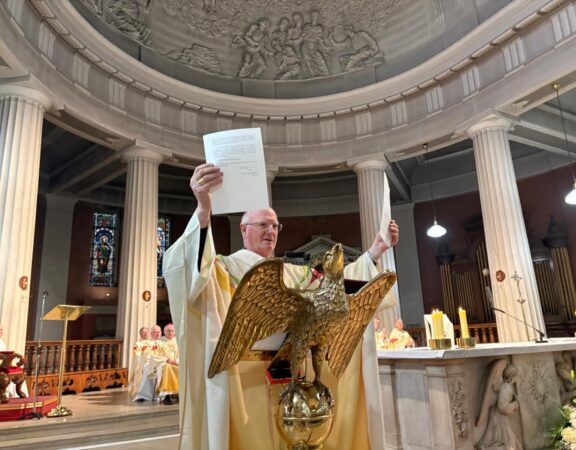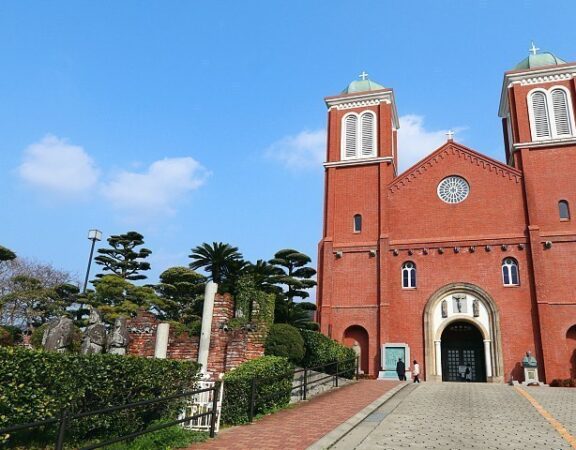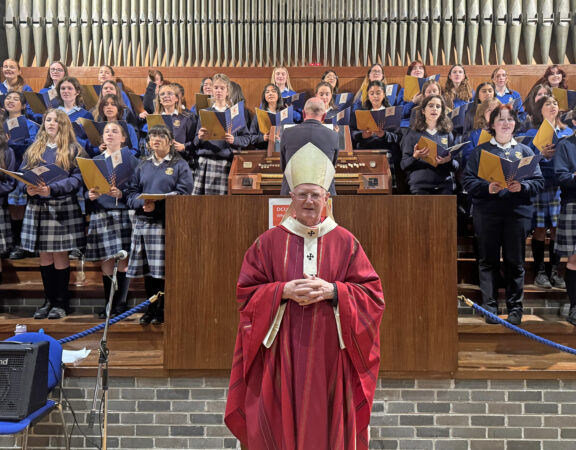100 YEARS OF SAINT BRIGID’S NATIONAL SCHOOL
Homily notes of Most Rev. Diarmuid Martin Archbishop of Dublin
Saint Brigid’s Parish Church, Cabinteely, 18th November 2014
“When I arrived here in Cabinteely as a curate just over 40 years ago this entire area was a very different place. Cabinteely and Cornelscourt were no longer just rural villages, but very much of the village culture was still alive. The history of the area was not something that was recorded in books but in the minds of the population, many of whom had lived here for generations. Things however were changing. It was a time of development and demographic change.
But even those who at that time were thinking about future development never imagined just how much change was still about to take place in the years to come.
Saint Brigid’s National School had already a history of over sixty years then and while it had remained largely unchanged until the early 1960’s it was now attempting to respond to the needs of a growing population. As was the norm in those days, the solution to growing numbers was to build prefabs and they were not by any means the prefabs of today, as you would note on rainy days!
Our schools in Ireland have a great ability to adapt. They have a great ability to maintain the traditions of past times and at the same time to respond to changing times. One of the great features of the school system which we have inherited today is the fact that it is rooted very much in the local community. At that time the Parish Priest was normally the sole manager, but the parish priest generally knew more about the local community than a distant bureaucrat in a government department. Even before the institution of Boards of Management, local communities were interested and involved in their schools. Two or even three generators of the local community would have attended small local schools like Saint Brigid’s and were proud of their school.
This local commitment has contributed greatly to the history and to the success of Saint Brigid’s. There is truth in the first reading which spoke about there being a season or a time for everything. The local community knew the times and how to respond and to plead for local needs and as times changed and circumstances varied the community had one constant concern: to ensure that the children and the young people of the community would have available to them the best possible educational advantage.
Small schools were the order of the day and as those of you who knew Saint Brigid’s – even at the time I was here – know that the school did not have the type of facilities which would today be considered even the minimum necessary. But that was made up for by the quality of teachers, teachers who transmitted not just knowledge and information, but a real passion for learning. The teachers had a personal knowledge of and passionate concern for the all the pupils of the school and their talents and problems and opportunities. The school was a true community and had its central place within a community.
That sense of community was at the heart of the values of the school. This school sprang up in an era where its vocation was clearly seen as being at the service of the deep religious values which were at the centre of the community. The building blocks of the school were understood as being part of something greater, that spiritual house about which our second reading spoke. Children received very much an integrated education into the best of Christian values and realised that their future was not something just about themselves, but was orientated towards the building of a better society to which they knew they had their contribution to make.
Education is not just about what is called educational excellence, or about producing good examination results, or just about the individual success of pupils, no matter how important each of these is. Education is about fostering fundamental attitudes in life, like the attitude referred to in the Gospel reading. The Gospel reading is not just about the disciples of Jesus or about those called to leadership in the Church, though the lesson is one about which all leaders within the Church are called to examine their consciences. Leadership is not about domination or imposition but about service.
The implications of the Gospel reading are wider. The fruit of Catholic education is about service: it is about the manner in which children are led into placing their talents at the service of the community. Education is not just about personal success; it is also about using individual talents for the betterment of society.
The young people of this city and this diocese have a real sense of generosity and idealism. They are sensitive to the needs of those who are disadvantaged. They are sensitive to the needs of the environment. They are seeking answers to fundamental questions about the meaning of their lives and about what kind of society we live in and would want to live in. They are asking questions at 12 years of age that we only began to think about when we were 21. They are also under the pressures of a consumerist and individualistic culture, a culture into which their parents and perhaps even entire communities can fall into. All of us need to be shaken up by the idealism of our young people and not to respond to their idealism with the almost natural cynicism which comes from our immersion in life’s compromises and life’s frustrations.
When I came to Cabinteely forty years ago I was – at least I think so – an idealistic young priest. Today I am an old man – neither of my parents lived to the age that I now am – and I begin to look back on my life and at the achievement of my generation and begin to ask myself what is the legacy that my generation has left to young people. Certainly we have done much to improve conditions of education, but we also have to look honestly at how a society emerged in our time whereby the weakest are paying a high price the mismanagement or indeed misappropriation of some and where, for example, funds for the educationally disadvantaged are being cut back and equal opportunity for the most disadvantaged is being reduced. We still have children in this city coming to school hungry.
I ask myself, how far the anger we see on our streets is in part the result of disillusionment about the society which my generation has bequeathed to today’s generation, whatever the level of responsibility each one of us has to bear. The answer is not in further frustration and certainly not in violence but in rediscovering that practical generosity and idealism and real sense of community caring which teachers and parents of this school managed to generate over generations in difficult times and for which we can today render thanks to God as we offer our prayers for the lives and futures of the pupils of today and tomorrow. ENDS







